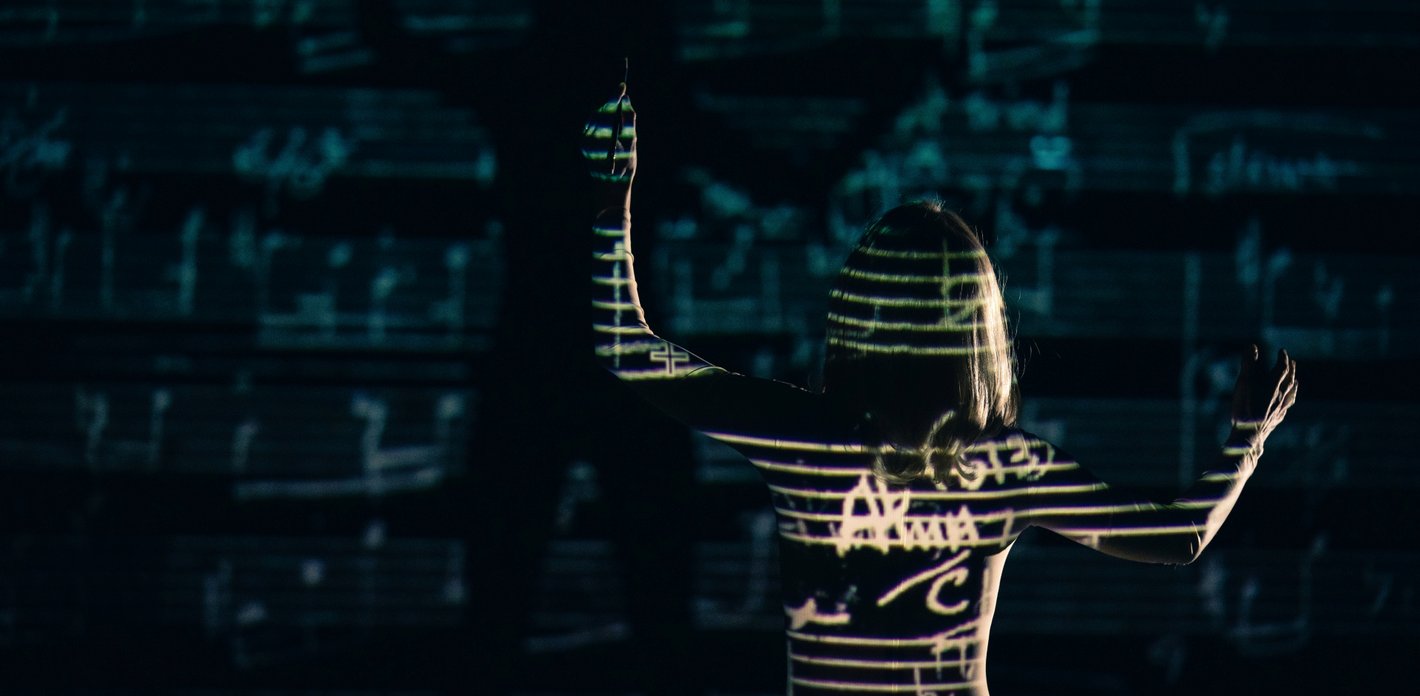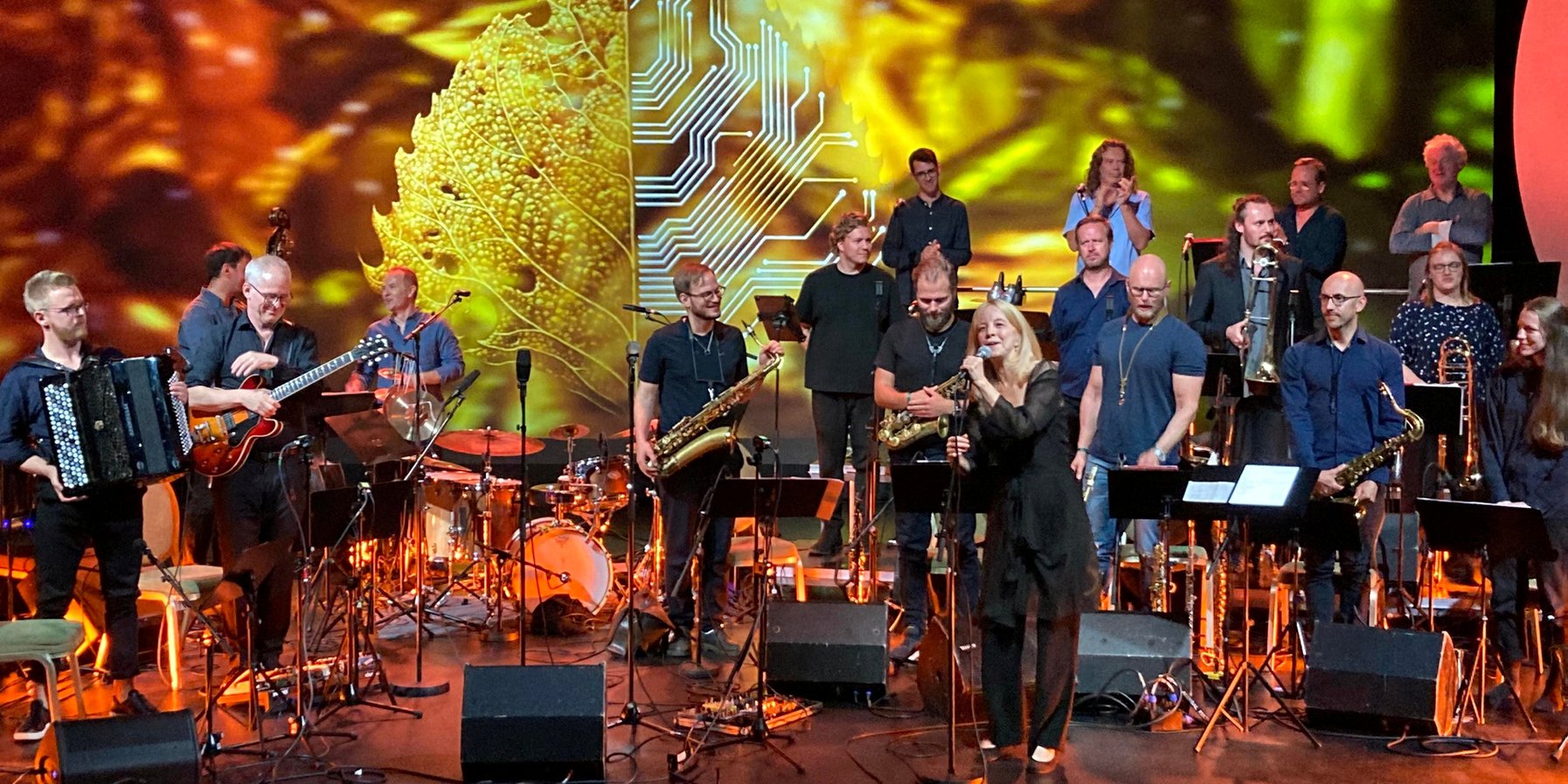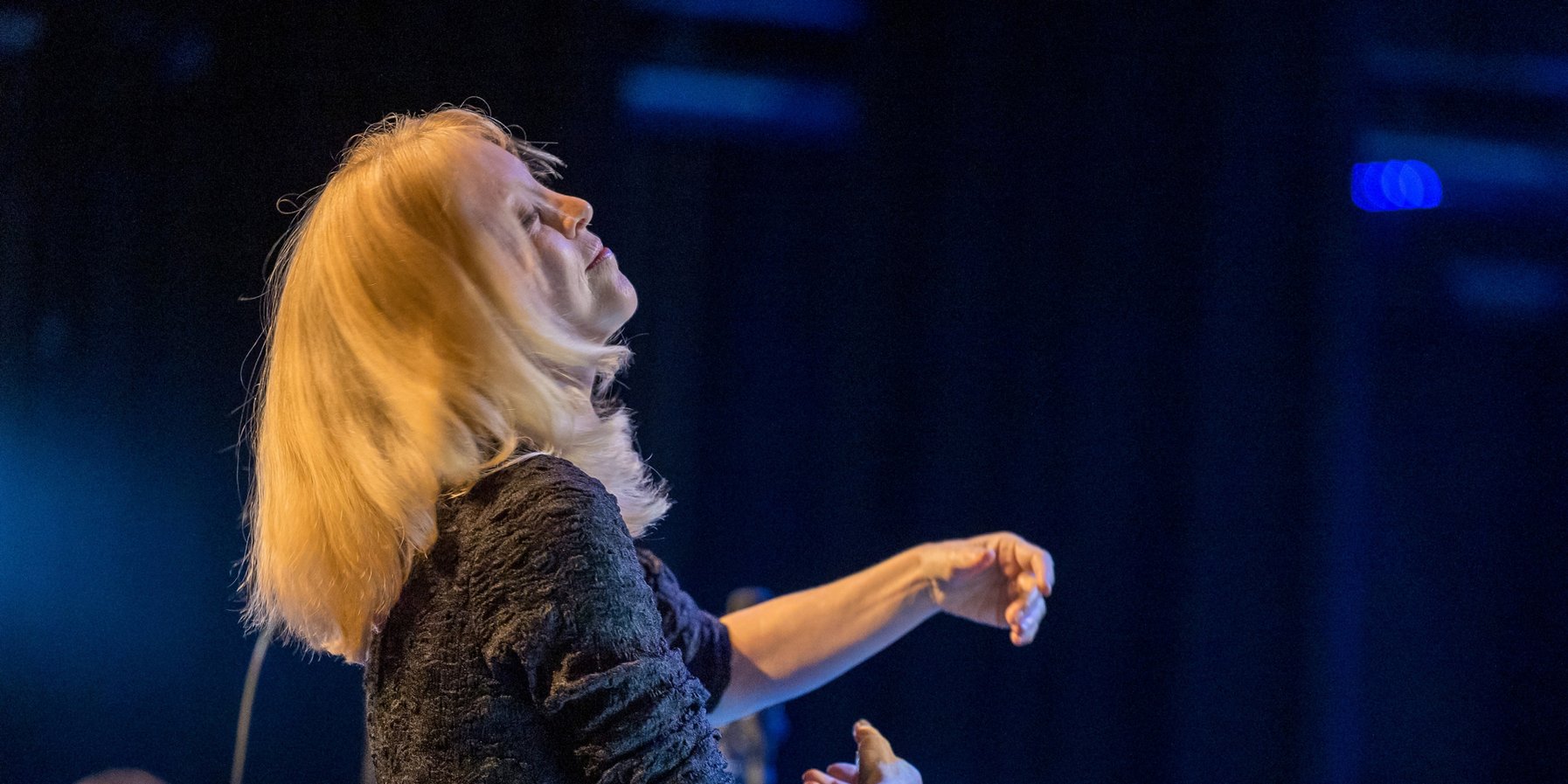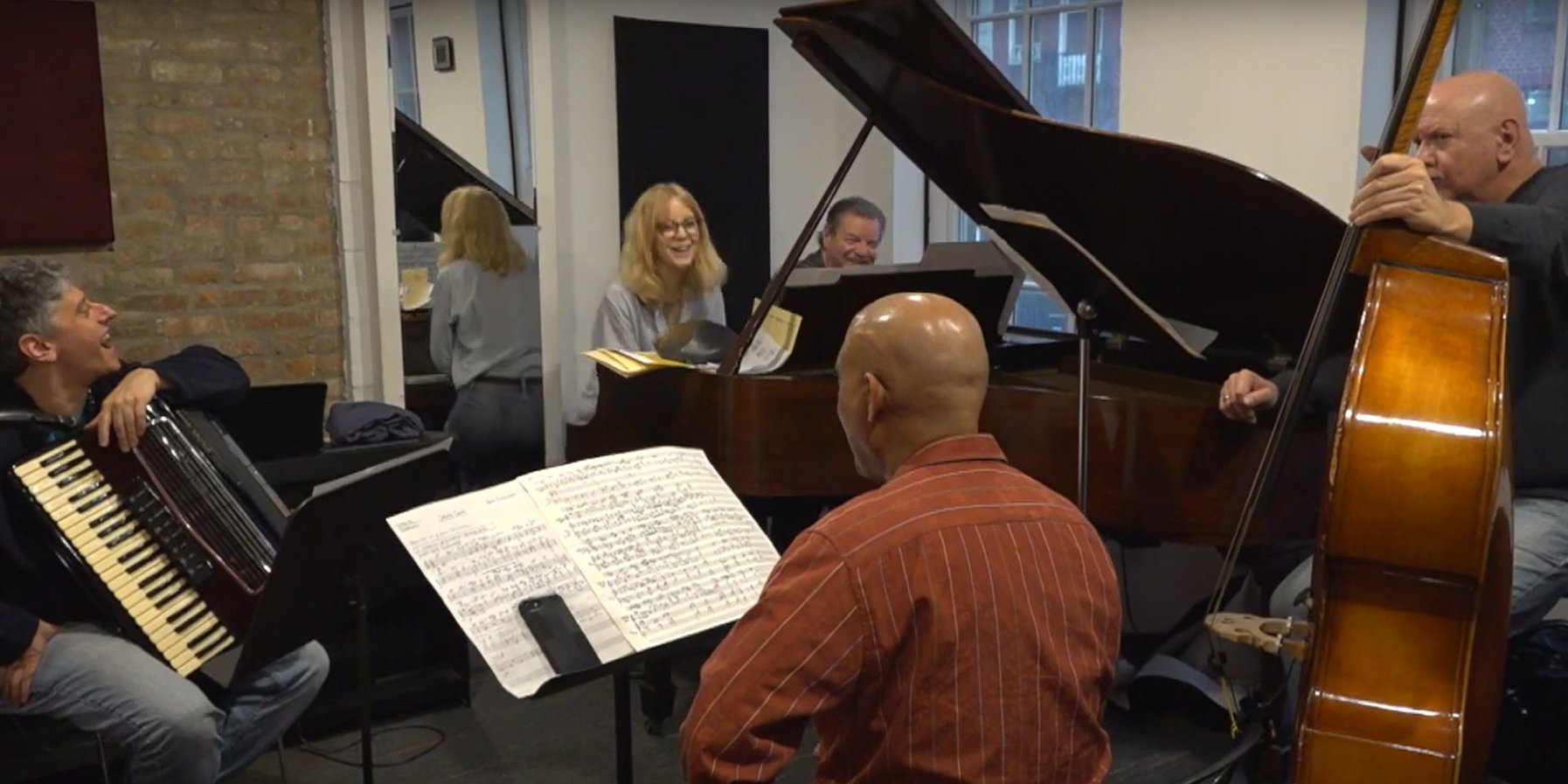Text: Tom R. Schulz, December 2021
A single leaf glows bright against the deepest dark of backgrounds. It stands upright, lingering, as though the very last of its kind – fragile and already weathered by the season. Delicate and exquisite, it gleams like finely worked gold. A memento mori, a poignant reminder of mortality. Yet, this autumn leaf is not merely a still life of impermanence. On closer examination, its right half reveals a gruesomely futuristic transformation: a plant turned cyborg. The organic veins on the left gradually morph into precise, parallel lines reminiscent of a microchip circuit board. As we humans naturally read from left to right, our gaze moves across from nature’s delicate, irregular beauty to the rigid, efficient linearity of the digital age.
Live at the Elbphilharmonie
On 11 March 2025, Maria Schneider and the Oslo Jazz Ensemble perform the »Data Lords« project in the Grand Hall.
The image created by Aaron Horkey brilliantly captures the dual themes of Maria Schneider’s latest album »Data Lords«, and serves as the perfect cover art. On two CDs, it explores the stark contrast between what the composer sees as the monstrous impact of large digital corporations and the enduring beauty of (human) nature that can never be destroyed by any behemoth of the tech world. »Data Lords« is a masterpiece—continuing a nearly 30-year tradition of Maria Schneider’s artistic brilliance, yet always punctuated by extended creative breaks.
A genre of its own
Her band, founded in 1994, was originally called the Maria Schneider Jazz Orchestra, before she dropped the word »jazz« around the turn of the millennium. That was the only logical thing to do. Despite her orchestra’s relatively traditional line-up, Schneider always infuses her compositions with tonal nuances brought about by unique combinations of instruments.
And her musicians play so freely and confidently, transcending all stylistic boundaries, not just of big band jazz but of jazz as a whole, that the artistry of Maria Schneider and her hand-picked band forms a genre sui generis.
In his heartfelt liner notes for the debut album »Evanescence« (1994), Schneider’s mentor Bob Brookmeyer offered a witty and somewhat paternal observation. He remarked that Schneider’s presence was a welcome change, joking that »after all those years of sitting in a row on stage with other ugly guys, seeing a pretty face at the front is as invigorating as fresh air.« Only to quickly add that, contrary to popular belief, musicians (male, of course) appreciate qualities like goodness, skill, musicality and talent, no matter who it comes from. »They can quickly pick out the phonies too,« he added.
If Schneider captivates anyone, it is because she is a truly original, radiant presence in contemporary (improvisational) music. Her exceptional ability to shape sound and texture stands out, and she fills her scores with a rich tapestry of melodic, harmonic, and rhythmic ideas. She meticulously edits and refines these elements until every moment in her works feels organic, compelling, and perfectly balanced. Her music glows with beauty and refinement, songfulness and depth, sometimes condensing into a fascinating, barely audible web of intertwining musical lines.
The performers in her ear
Unlike Carla Bley and Toshiko Akiyoshi, who have always led parallel lives as pianists in their artistic careers, Maria Schneider focused her energy entirely on composing and conducting from the very beginning. Her focus on crafting a musical world that breathes life into others is closely tied to a quality often associated with Duke Ellington in the jazz world: the ability to envision and hear her performers while composing, providing them with improvisational frameworks perfectly tailored to their strengths.

It is not a sign of coquetry when Schneider credits the two Grammys she won in 2021 for »Data Lords« (after five previous trophies for earlier albums) to her musicians as much as to herself. The compositions she has conceived and written down only truly become a distinct work through the soloists’ exuberant improvisational imagination and interpretative skill. Schneider has been working with top musicians such as baritone saxophonist Scott Robinson, guitarist Ben Monder, pianist Frank Kimbrough, altoist Steve Wilson and tenorist Donny McCaslin in her band for 30 years in some cases, and their personalities shine through in extended solos full of endless nuance. She collaborates with people who still have something new to say and are able to articulate it like no one else can.
Bassist Jay Anderson and drummer Johnathan Blake are central stars in Maria Schneider’s orchestral cosmos. Their playing is far removed from any rhythmic constraints as they perform with a bold, headstrong style. Alongside them, the accordionist Gary Versace may be Schneider’s most fortunate asset of all. The man is a shimmering, light virtuoso who can transform the entire atmosphere of a song into an impression of Paris, of musette, of serene melancholy with a single note.
Trailer: »Data Lords«
In defiance of the global data lords
As imaginative and flawless as Maria Schneider’s art may seem, it is deeply rooted in the realities of our lives. In interviews, articles and essays, she frequently gives vent to her fierce anger at data lords like Google, Facebook, Amazon & Co. who profit from the data of millions and millions of individuals while avoiding any fiscal responsibility. This perspective naturally aligns with the actions and thoughts of an artist who broke free from the music industry’s embrace two decades ago, choosing to forge her own path with the support of the online platform »Artist Share«.
The name »Artist Share« alludes to the share that artists receive from the music business – or not, as the case may be. It also refers to the willingness of those artists who distribute their work on this platform to engage in an extended dialogue with their audience and allow them to participate in the artistic process, even if only as financial backers. If you’d been quick enough, you could have bought one of the 100 prints hand-signed by Aaron Horkey, complete with his fantastic cover design for 125 dollars in the run-up to the release of »Data Lords« – and done your little bit to finance this truly remarkable album.
This article appeared in Elbphilharmonie Magazin (Issue 1/22).









